7 Air-Purifying Plants You Need In Your Condo
By: Melecio Martin G. Arranz IV

Most people stay indoors 80% of the time, whether it is at home or working in an office. As such, we ensure that our indoor space is as pleasant and alive as much as possible.
However, living and working in energy efficient, modern buildings come with unwelcomed indoor air pollutants. Unwanted toxins such as benzene, formaldehyde, trichloroethylene, xylene, and ammonia come from modern furnishings like carpets, synthetic fabrics, table napkins and printer ink. The limited airflow traps the toxic agents and can trigger headaches, eye irritation, and sore throat among others.
In 1989, National Aeronautics and Space Administration (NASA) conducted a study to discover which common indoor plants are effective in absorbing harmful toxins and pollutants, especially in enclosed spaces with little to no airflow. Their results have stood the test of time, and have been the basis for other studies about plants and air purifiers. While they are not high-tech innovations, plants bring us back to our natural ecosystem in which humankind evolved.
Improve the indoor air quality in your condominium unit with these seven NASA-approved air-purifying plants.
7 Air Purifying Plants You Need To Grow in Your Condo
1. Chrysanthemums (Chrysanthemum morifolium)
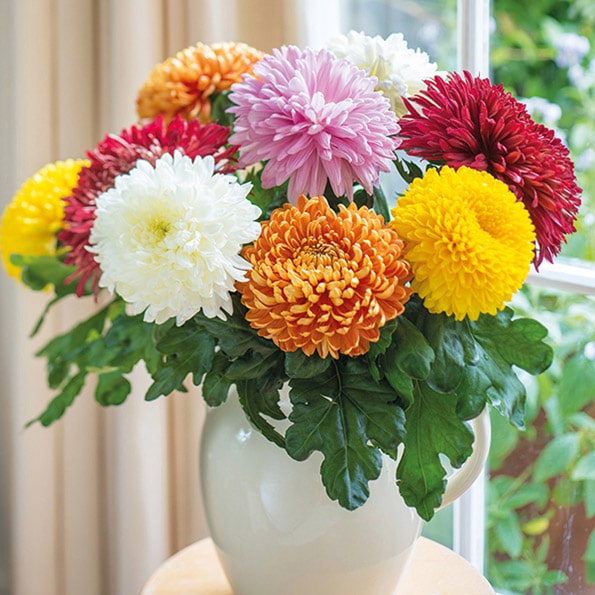
Daisy-like with a yellow center and a decorative pompon, chrysanthemums symbolize optimism and joy. Florist’s chrysanthemums or “mums” are common gift plants available all year round. It is the 13th wedding anniversary flower and November birth flower.
Chrysanthemums are ranked the highest for air purification. In the NASA Clean Air Study, Chrysanthemums absorb benzene, formaldehyde, trichloroethylene, xylene, and ammonia in the air. Only the flowers of chrysanthemums purify the air, though. The flowers bloom for about six weeks; then you can fertilize the pot again in the spring when new growth appears. Despite the friendly mum name, take note that chrysanthemums are toxic to pets and children. Best to keep them out of their reach.
2. Peace Lily (Spathiphyllum)
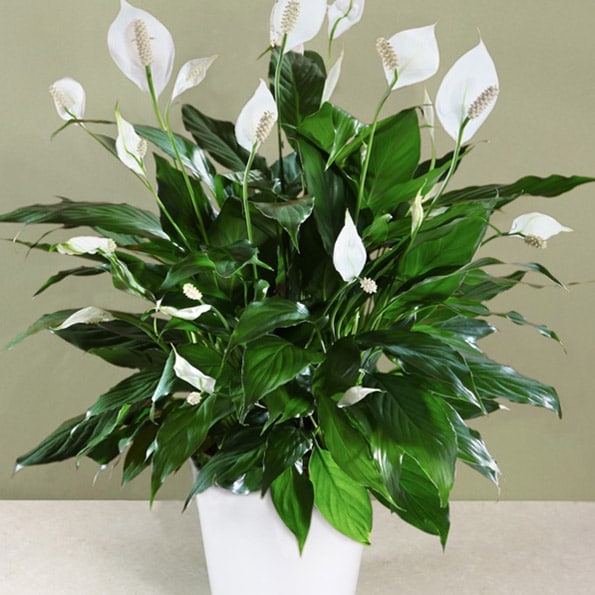
Peace lilies make a great addition to your indoor space with its dark green foliage contrasting pleasantly with its delicate white flowers. One of the most popular plants to grow indoors, peace lily can thrive in any lighting conditions. Keep the soil slightly moist and avoid too much shade to allow flowers to bloom.
Peace Lily is one of the top three plants for purifying the indoor air of benzene, formaldehyde, trichloroethylene, xylene, and ammonia. Despite its name, the plant is mildly toxic to cats and dogs when ingested. Peace lily contains calcium oxalate, which can cause mouth irritation, excessive drooling, and vomiting.
3. Red-Edge Dracaena (Dracaena Marginata)
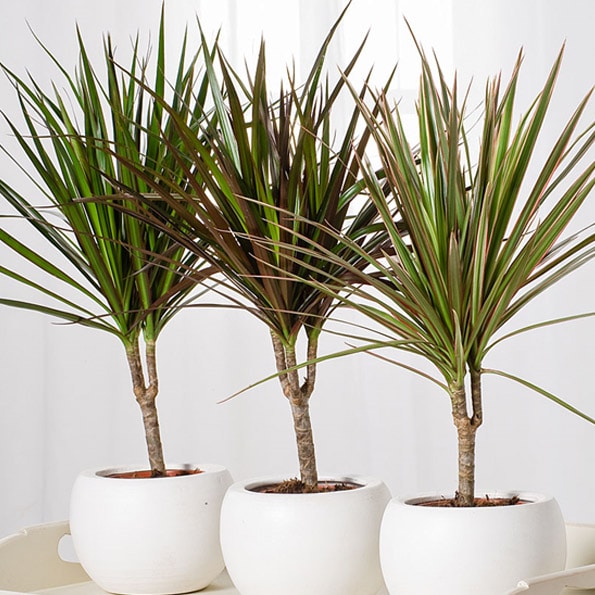
Meaning dragon in ancient Greek, dracaenas are tough plants that can tolerate newbie gardeners errs. The red-edged variety is considered the most versatile. With the purple red edges on its green ribbon leaves, dracaenas bring a tropical vibe to any room it graces. Dracaenas flourish best under warm, bright light and well-drained soil.
Red-edged dracaenas are very efficient at removing benzene, formaldehyde, trichloroethylene and xylene from the air in your home. However, the plant is mildly toxic to pets. When ingested, it can cause depression, inappetence, and incoordination to both cats and dogs.
4. Snake Plant (Sansevieria Laurentii)
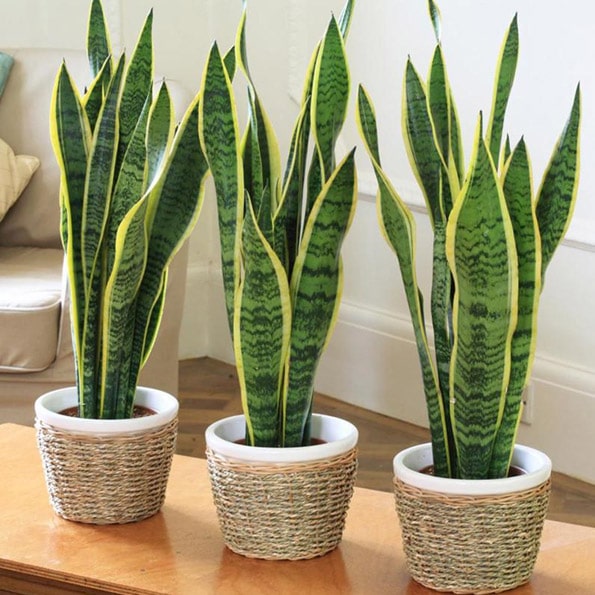
Known in a variety of common names including mother-in-law’s tongue and snake plant, Sansevieria trifasciata is a species of houseplant featuring stiff, upright leaves that range from one to eight feet tall depending on variety. This plant is among the hardest to kill houseplants and can withstand any condition. Snake plant can survive both dim situations to full sun conditions but will suffer if exposed to temperatures below 10°C. Snake plant thrives best with indirect but steady light and underwatering.
The snake plant is one of the most recommended plants to improve indoor air quality. Snake plant eliminates the toxins benzene, formaldehyde, trichloroethylene and xylene. However, take note that its leaves are toxic to pets and children, so keep it out of their reach. Ingestion can cause nausea, vomiting and diarrhea.
5. Bamboo Palm (Chamaedorea seifrizii)
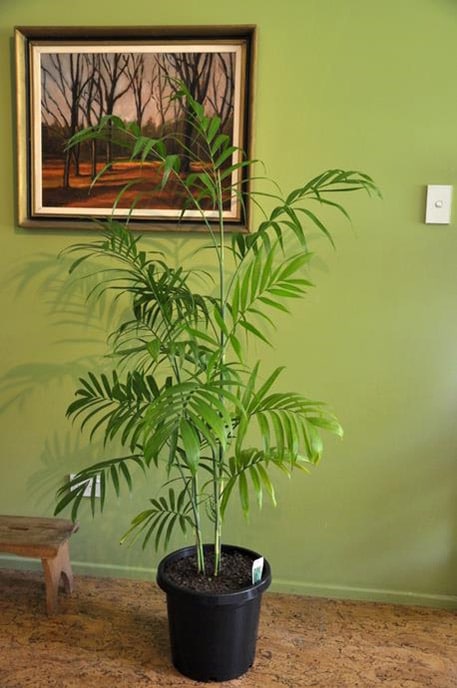
Resembling the multi-stemmed growth habit of bamboo, the bamboo palm is a sturdy plant known for its height and elegance. Bamboo palm grows in part shade to bright light conditions and needs moist well-drained soil. Bear in mind to mist occasionally to prevent spider mites.
A natural humidifier, bamboo palm produce a healthy dose of moisture into the air. It also removes toxic agents formaldehyde, benzene and trichloroethylene in the air – great for homes with high exposure to car fumes and gasoline. Bamboo palm is non-toxic and safe to keep in a house with pets.
6. Golden Pothos (Epipremnum aureum)

Also called as devil’s ivy because of thriving even when kept in the dark, golden pothos is an evergreen vine that can grow up to sixty meters in the wild. Indoors, it flourishes in any light condition and can grow in water or dry soil. Golden pothos looks best in a hanging pot where the trailing leaves can take center stage.
Golden pothos is considered one of the most effective in purifying the indoor air of benzene, formaldehyde, and trichloroethylene. However, keep the plant out of the reach of cats and dogs, as it is mildly toxic. Golden pothos contains insoluble calcium oxalate crystals, which can cause mouth irritation, excessive drooling, and vomiting when ingested.
7. Spider Plant (Chlorophytum comosum)
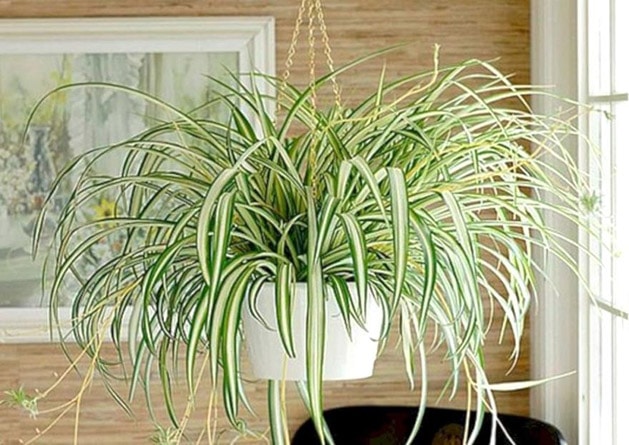
Spider plants are a favorite among first-time gardeners or forgetful owners. They can grow indoors in any condition and suffer few problems. Plus, they look great in a hanging basket or grown in pots. Its green and yellow stems can grow up to 18 inches long and produce tiny white blooms called spiderettes. Spider plants thrive best with indirect sunlight and occasional watering.
As an air-purifier, spider plant eliminates the toxins formaldehyde and xylene emitted by tobacco, paint and synthetic fabrics. It is great to place in freshly painted or newly renovated homes. Spider plant is also non-toxic and safe for pets.
Adding a plant in your home not only brightens a room, but it also freshens the air in your condominium unit. Choose among these easy to care for plants and revamp up your living space.
As a premier Philippine real estate company, Federal Land, one of the leading real estate developers in the Philippines, develops thoughtfully designed RFO and pre-selling condo for sale in Marikina and other prime locations across the country. Get in touch with them today to find your next property.

